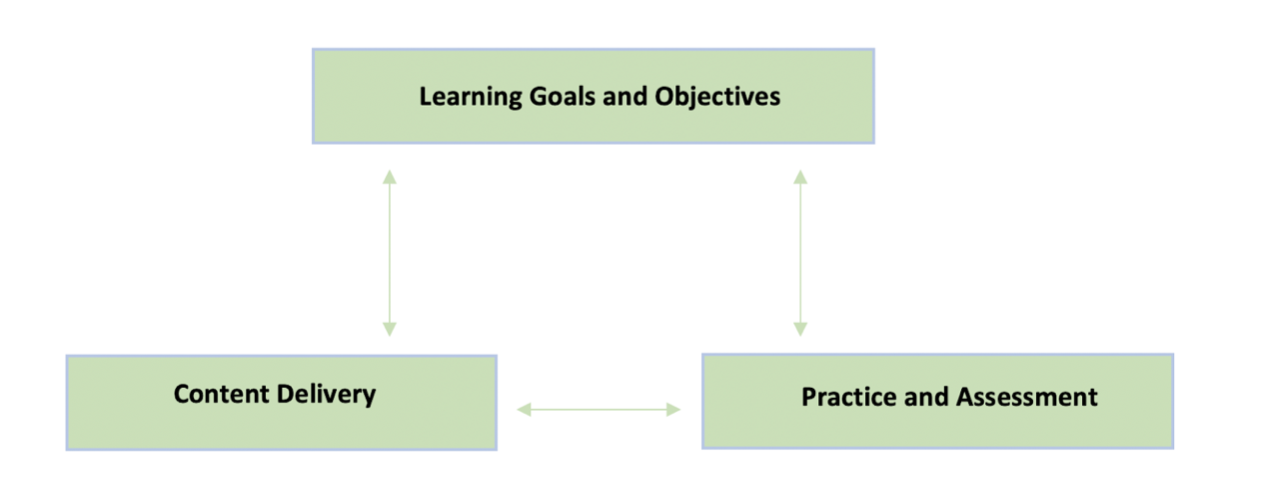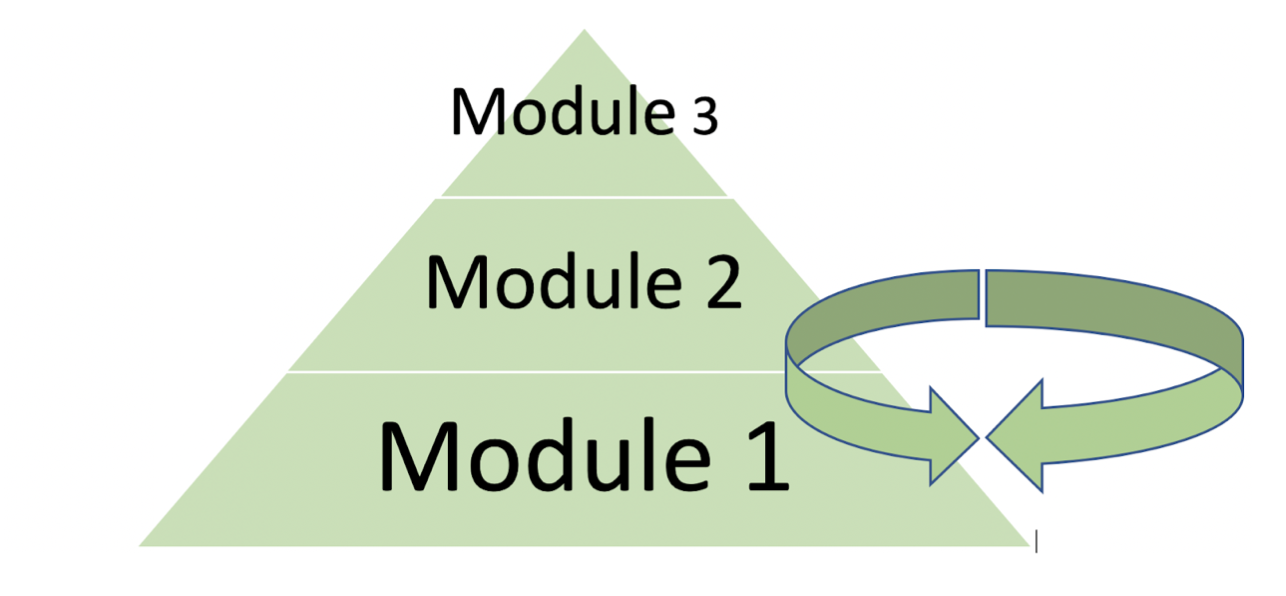Adaptive learning is a powerful pedagogy and framework in higher education (Martin et al., 2020). This model uses an algorithm to adapt information based on the content and learner model. The challenge with adaptive learning for both faculty and course designers is controlling the pacing and content delivery to the student. Adaptive technologies can loop students in remediation loops where they remain in week 1 of the course for practice and assessment when they should be in a much later week. These loops can happen at any time and neither the faculty or the course designer can set the “trigger” that keeps students from moving on.
Many learning technology companies are developing integrations for a learning management system that allows adaptive learning practice. Implementing this generally means adding in third-party software such as the Pearson MyLab integrations, ALEKS, Realizit, LearnDash, SmartBooks, etc. This article will explore the challenges of designing a course that deploys this type of third-party adaptive feature. In this series of blog posts, I will explore these challenges starting with control of the content in the course.

When designing a course, there is a crucial process of mapping objectives for all content and assessments, often referred to as a blueprint or outline. The blueprint is essential as it also ensures that all content delivered is present to help students obtain the needed skills. The blueprint ensures that students acquire the skills required to master the course learning objectives (CLOs). The last important feature of the outline is the time on task. Instructional designers must consider how much time a student will spend moving through all the activities and content for accreditation and ensure the workload fits into the learner’s schedule.
With adaptive plug-ins, course design can become a challenge for the reasons that make adaptive learning powerful. For example, if a student is missing foundational skills, the adaptive plugin will start the student off on different content so that they can close those gaps. This design is great from a learning perspective since the student is being met at their exact skill level to bring it up to where it needs to be without the course requiring without the course needing to deliver foundational content to all learners. Sounds great, right? However, now the student is not practicing the content. They spend their time on the foundational content, not the educators’ intended content for that week. Then, students are not assessed for the outcomes of the module, and it is difficult to account for how far behind a student may be.

In addition, a student may have all the foundational skills but struggle with one particular module. Due to adaptive learning design, they will again work on practices different from the course content for the next module as they have to master the previous skills. This creates a loop of bouncing between the content for the module and the practice for the earlier module. Additionally, estimating the learning time is challenging since all students start in different places, impacting the number of hours they spend learning each week.
There isn’t a one-size-fits-all solution for this. However, what if a learning platform could account for both the content delivery and adaptive learning within the system and course design? Argos provides that unique course authoring capability. No one is better suited than the subject matter expert to determine what demonstrates mastery of an objective. Within Argos, you can deliver the content and create focused adaptive activities on that content. Control is given back to the faculty and course designer to determine what criteria should be met to consider students at mastery as well as what skills really need to be remediated. If students do not master that skill, they can be looped back into the content delivery within the instructor-designed content so that the adaptive practice aligns with the learner outcomes for that module. This powerful feature allows faculty and designers to focus on the objectives within the content and not rely on a third party that likely does not have learning outcomes exactly matched to the module learning outcomes. This functionality eliminates broad outcomes that an algorithm applies due to a wide range of schools and programs adopting it and instead leverages exact powerful outcomes for student mastery.
Over the coming blog posts, I will explore these adaptive features and how you can leverage them within the course authoring of Argos to create impactful learning experiences that target crucial skills for mastery. The blend of content delivery and adaptive learning solves many problems with learners’ pacing, and scaffolding as the design is in the control of the faculty and/or the instructional designer working hard to create the best possible learning experience.
Citation:
Martin, F., Chen, Y., Moore, R. L., & Westine, C. D. (2020). Systematic review of adaptive learning research designs, context, strategies, and technologies from 2009 to 2018. Educational Technology Research and Development 68,1903–1929.